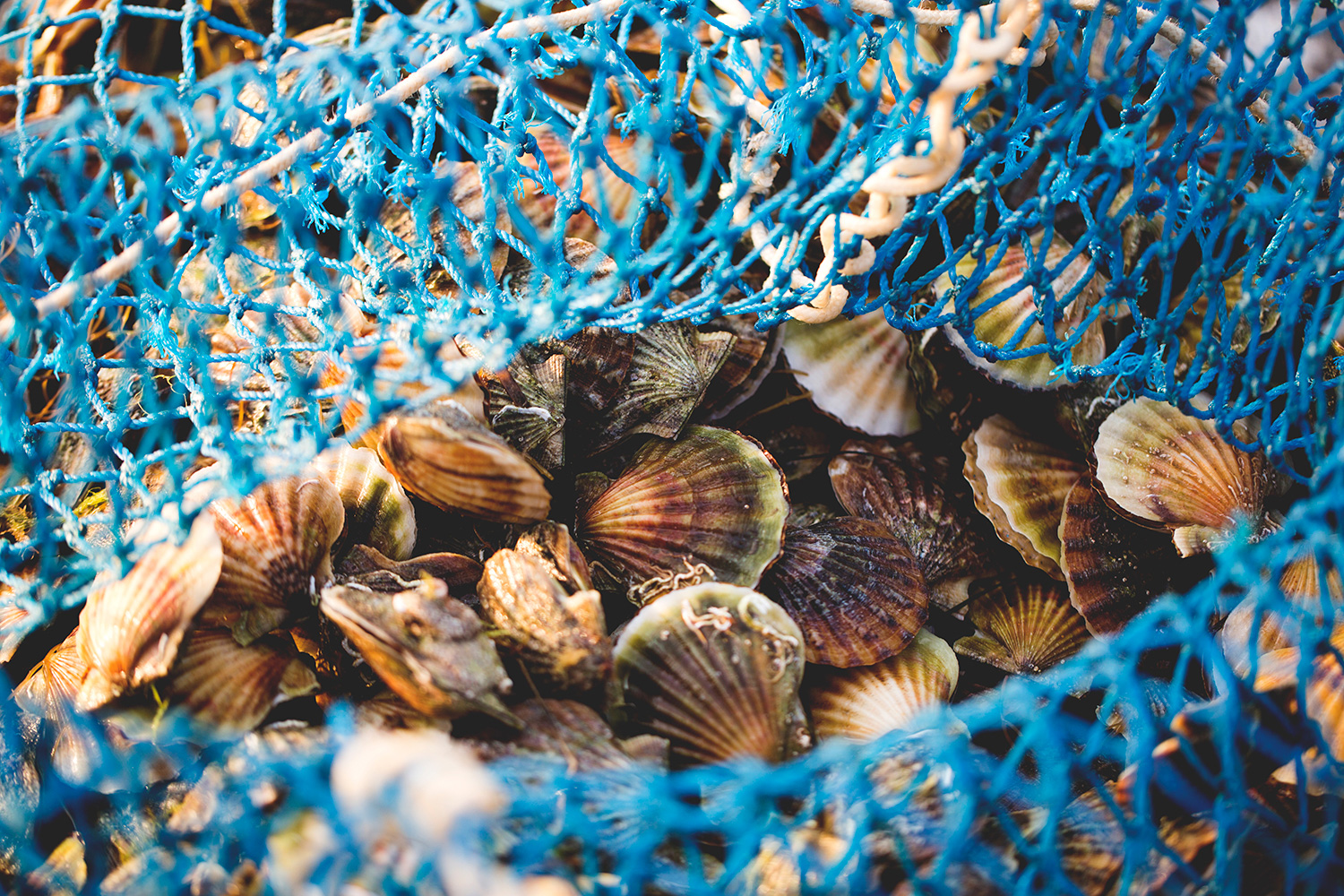Each year, fishermen harvest more than $500 million worth of Atlantic sea scallops from the waters off the East Coast of the United States. A new model created by scientists at the University of Virginia and the Woods Hole Oceanographic Institution, however, predicts that those fisheries may potentially be in danger.
As levels of carbon dioxide increase in Earth’s atmosphere, the oceans become increasingly acidic – a condition that could reduce the sea scallop population by more than 50 percent in the next 100 years under a worst-case scenario. Strong fisheries management and efforts to reduce CO2 emissions, the researchers say, might slow or even stop that trend.
The model, which was published this week in the journal PLOS One, combines existing data with models of four factors influencing the fishery: future climate-change scenarios, ocean acidification impacts, fisheries management policies, and fuel costs for fishermen.
“Rising atmospheric carbon dioxide levels pose a threat to many types of marine life, particularly shellfish,” UVA environmental sciences professor Scott Doney said. “The ocean removes about a quarter of the carbon dioxide humans release to the atmosphere each year from fossil fuel use and deforestation. The resulting acidification of seawater makes it more difficult for shellfish like scallops and clams to build and maintain their shells.”
No existing studies have been published that can show the specific effects of ocean acidification on the Atlantic sea scallop. To estimate its impact in the model, Doney and his colleagues incorporated a range of effects based on studies of related shellfish species. Combined with estimates of changing water chemistry, this new model lets scientists explore how plausible impacts of ocean acidification may change the future of the scallop population.
“What’s novel about our work is that it brings together models of changing ocean environments, as well as human responses,” said Woods Hole researcher Jennie Rheuban, the lead author of the study, who holds bachelor’s and master’s degrees in environmental sciences from UVA. “It combines socioeconomic decision-making, ocean chemistry, atmospheric carbon dioxide, economic development and fisheries management. We tried to create a holistic view of how environmental changes might play out across different aspects of the sea scallop fishery.”

The researchers tested four different levels of impact in each of the four different factors influencing the model, ultimately creating 256 different scenario combinations. One group of scenarios looks at possible pathways of how ocean acidification may impact scallop biology. Another examines different levels of atmospheric CO2, including one future where emissions continue to skyrocket, and one where they fall due to aggressive climate change policy. A third set includes a range of future fuel costs, which themselves are related to climate change policies. Higher fuel costs can lead to fewer active fishing days, reducing stress on the fishery itself, but also reducing profitability and revenues of the industry. The fourth and final set involves different federal fisheries management techniques.
Fishing policies for some shellfish, like oysters, clams, and bay scallops, are regulated by state or local governments, each of which follows its own set of rules. Sea scallop fisheries, however, are located well offshore in a region stretching from Virginia to Maine, so are regulated mostly by the federal government. With only one set of rules covering sea scallop fisherman, it’s possible to fit them into the model.
“The current sea scallop fishery is so valuable in part because it is very well-managed,” Doney said. “We also used the model to ask whether management approaches could offset the negative impacts of ocean acidification.”
In all of the model’s possible scenarios, high levels of CO2 in the atmosphere consistently led to increased ocean acidification and fewer sea scallops, despite introducing stricter management rules or even closing part of the fishery entirely.
“The model highlights the potential risks to sea scallops and likely other commercial shellfish fisheries of unabated carbon emissions to the atmosphere,” Doney said.
Over the next 100 years, under the worst-case ocean acidification impacts, the model’s “business-as-usual” scenario shows a sea scallop decline of more than 50 percent, while a scenario with proactive climate policy shows only a 13 percent reduction.
“The model shows that reductions in fossil fuel emissions due to climate policy might have big impact on sea scallop fisheries,” Rheuban said.
The study’s other authors are Sarah R. Cooley of the Ocean Conservancy and Deborah R. Hart of the NOAA Northeast Fisheries Science Center.
Media Contact
Article Information
September 26, 2018
/content/study-ocean-acidification-may-reduce-sea-scallop-fisheries

